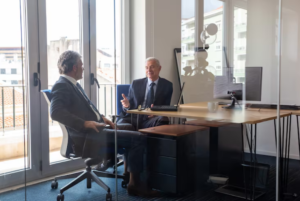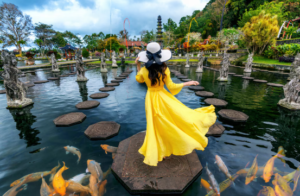
Fashion photography is an art form that transcends mere documentation of clothing and accessories. It is a dynamic interplay of creativity, technical skill, and storytelling that captures the essence of style and glamour. From the meticulously staged editorials in high-fashion magazines to candid street style shots, fashion photography shapes our perception of beauty and trends. This article explores the evolution of fashion photography and the elements that make a captivating fashion image.
The Evolution of Fashion Photography
Early Beginnings and Iconic Figures
Fashion photography began to emerge as a distinct genre in the early 20th century, coinciding with the rise of fashion magazines like Vogue and Harper’s Bazaar. These publications sought to showcase the latest designs and trends in a visually compelling way, leading to the birth of fashion photography. Edward Steichen, often considered one of the pioneers of fashion photography, brought an artistic and avant-garde approach to the genre. His work for Condé Nast in the 1920s and 1930s set the standard for fashion imagery, combining elegance with a modern sensibility.
Another iconic figure in the evolution of fashion photography is Richard Avedon. His groundbreaking work in the mid-20th century brought a new level of dynamism and emotion to fashion photography. Avedon’s ability to capture the personality and movement of his subjects, as seen in his famous image of model Dovima with elephants, pushed the boundaries of conventional fashion photography. His influence is still felt today, inspiring photographers to blend art and fashion seamlessly.
The Rise of Editorial and Street Style Photography
The latter half of the 20th century saw the rise of editorial photography, which focuses on creating elaborate and often fantastical scenes to showcase fashion. Photographers like Helmut Newton and Guy Bourdin became known for their provocative and surreal imagery, pushing the limits of what fashion photography could convey. Their work often featured bold compositions, dramatic lighting, and a sense of narrative, transforming fashion photography into a form of visual storytelling.
In contrast, the 21st century has seen the rise of street style photography, driven by the democratization of fashion through social media and blogs. Pioneers like Bill Cunningham and later Scott Schuman of The Sartorialist began capturing real people on the streets, showcasing their personal style and the way they interpreted fashion. This genre celebrates individuality and accessibility, highlighting that fashion is not just confined to runways and editorials but is a part of everyday life.
Elements of Captivating Fashion Photography
Composition and Lighting
The composition of a fashion photograph is crucial in creating a visually appealing image. It involves the arrangement of elements within the frame, including the model, clothing, accessories, and background. A well-composed image guides the viewer’s eye through the photograph, emphasizing the key aspects of the fashion being showcased. Photographers often use techniques like the rule of thirds, leading lines, and framing to create balance and interest in their compositions.
Lighting is another essential element that can dramatically affect the mood and impact of a fashion photograph. Natural light provides a soft and flattering effect, often used in outdoor shoots to create a more organic feel. Studio lighting, on the other hand, offers control and precision, allowing photographers to sculpt the light and create dramatic shadows and highlights. The choice of lighting can convey different emotions and atmospheres, from the ethereal glow of a sunrise to the stark contrast of a high-fashion editorial.
Styling and Art Direction
Styling and art direction play a pivotal role in fashion photography, transforming concepts into visual reality. The stylist collaborates with designers, makeup artists, and hair stylists to create a cohesive look that complements the photographer’s vision. Every detail, from the choice of garments and accessories to the hair and makeup, contributes to the overall aesthetic of the photograph.
Art direction involves the conceptualization and execution of the shoot’s theme and narrative. It requires a clear vision and meticulous planning to ensure that all elements come together harmoniously. Whether it’s a minimalist shoot focusing on clean lines and simplicity or a lavish editorial inspired by a specific era or story, the art director’s role is to create a visual narrative that captivates and engages the viewer.
The Role of the Model
The model is the focal point of fashion photography, bringing life and movement to the garments. A successful fashion photograph relies on the model’s ability to convey emotion, attitude, and personality through their poses and expressions. Models work closely with photographers to interpret the concept of the shoot, using their body language and facial expressions to tell a story.
The relationship between the photographer and the model is crucial in creating authentic and compelling images. Trust and communication allow the model to feel comfortable and confident, resulting in more natural and powerful photographs. Iconic models like Kate Moss and Naomi Campbell have become legends in the fashion industry, not only for their beauty but for their ability to transform and adapt to different styles and concepts.
Post-Production and Editing
Post-production is the final step in fashion photography, where the raw images are transformed into polished works of art. This process involves color correction, retouching, and sometimes compositing multiple images. Editing enhances the visual appeal of the photographs, ensuring that the colors, textures, and details are presented in the best possible way.
While editing can enhance the image, it is essential to maintain a balance and avoid over-retouching. Authenticity is becoming increasingly valued in fashion photography, with a growing movement towards celebrating natural beauty and imperfections. Ethical considerations in editing practices are important to ensure that the final images represent a realistic and respectful portrayal of the models and garments.
In conclusion, fashion photography is a multifaceted art form that captures the essence of style and glamour through the lens. Its evolution from early 20th-century studio shots to modern street style and editorial photography reflects the ever-changing nature of fashion itself. By mastering elements such as composition, lighting, styling, and post-production, photographers create images that not only showcase clothing but also tell compelling visual stories. Fashion photography continues to inspire and influence our perception of beauty, making it an integral part of the fashion industry and culture.






